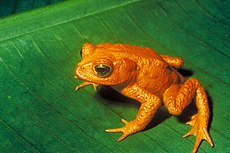Red List of Threatened Animals
 |
|
| Headquarters | United Kingdom |
|---|---|
|
Region served
|
International |
|
Official language
|
English |
|
Parent organization
|
International Union for Conservation of Nature |
| Affiliations | Species Survival Commission, Birdlife International, Conservation International, NatureServe, Botanic Gardens Conservation International, Royal Botanic Gardens, Texas A&M University, Sapienza University of Rome, Zoological Society of London, Wildscreen |
| Website | www |
| Conservation status | |
|---|---|
 |
|
| Extinct | |
| Threatened | |
| Lower Risk | |
|
Other categories |
|
|
|
|
Related topics |
|

|
|
The IUCN Red List of Threatened Species (also known as the IUCN Red List or Red Data List), founded in 1964, is the world's most comprehensive inventory of the global conservation status of biological species. The International Union for Conservation of Nature (IUCN) is the world's main authority on the conservation status of species. A series of Regional Red Lists are produced by countries or organizations, which assess the risk of extinction to species within a political management unit.
The IUCN Red List is set upon precise criteria to evaluate the extinction risk of thousands of species and subspecies. These criteria are relevant to all species and all regions of the world. The aim is to convey the urgency of conservation issues to the public and policy makers, as well as help the international community to try to reduce species extinction. According to IUCN (1996), the formally stated goals of the Red List are (1) to provide scientifically based information on the status of species and subspecies at a global level, (2) to draw attention to the magnitude and importance of threatened biodiversity, (3) to influence national and international policy and decision-making, and (4) to provide information to guide actions to conserve biological diversity.
Major species assessors include BirdLife International, the Institute of Zoology (the research division of the Zoological Society of London), the World Conservation Monitoring Centre, and many Specialist Groups within the IUCN Species Survival Commission (SSC). Collectively, assessments by these organizations and groups account for nearly half the species on the Red List.
The IUCN aims to have the category of every species re-evaluated every five years if possible, or at least every ten years. This is done in a peer reviewed manner through IUCN Species Survival Commission (SSC) Specialist Groups, which are Red List Authorities responsible for a species, group of species or specific geographic area, or in the case of BirdLife International, an entire class (Aves).
...
Wikipedia
